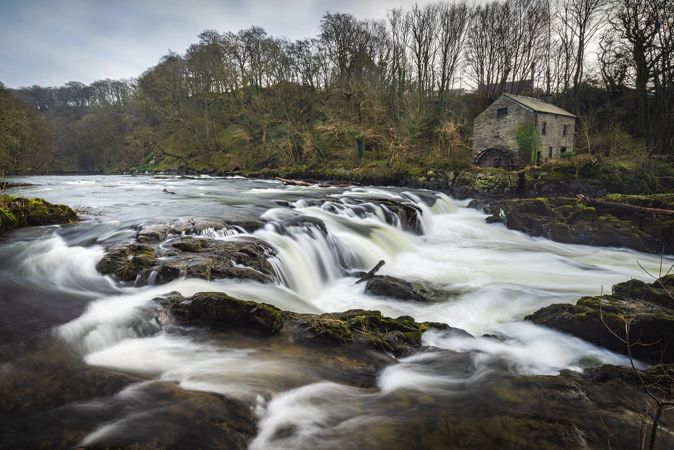Safeguarding our Special Area of Conservation rivers for future generations

Last month, Julie James MS, Minister for Climate Change, reconvened the third River Pollution Summit, bringing together key representatives from government, regulators and industries to pledge commitments to help solve the water quality challenges we face.
Following on from the last Summit in March, discussions largely centred on actions to restore nine our Special Area of Conservation (SAC) rivers.
These rivers are designated for their rich biodiversity and are home to some of our most iconic species such as Atlantic salmon, otter and twaite shad.
Each of our SAC rivers – the Wye, Cleddau, Eden, Gwyfai, Teifi, Tywi, Glaslyn, Dee and Usk – are awarded special protective measures to conserve the precious habitats and species they support.
But our rivers are facing many challenges. Discharges from sewage treatment works, intensification of agriculture and the legacy of historical river engineering are just some of human influences placing increasing pressures on our river flows, water quality and river habitats.
In 2021 we reported that sadly, only 39% of our SAC rivers were meeting new, more stringent targets for phosphorus introduced by the Joint Nature Conservation Committee.
Too much phosphorus can lead to eutrophication and can cause significant ecological damage to rivers including altering the balance of plant species within river habitats.
Since then, millions of pounds of development has been on hold in SAC river catchments where phosphorus targets have been exceeded, including much needed affordable housing.
Working towards a better future for our rivers
Since 2021, colleagues within our SAC rivers project have been working with local planning authorities, Welsh Government, Dŵr Cymru Welsh Water, Natural England and the Environment Agency to gather greater evidence on the sources of phosphorus pollution and set into motion the necessary actions to reduce pollution.
Source apportionment modelling by Dŵr Cymru Welsh Water and NRW has determined the main contributing sources of phosphorus in each SAC river.
Nutrient Management Boards, with cross-sector memberships, have been set up in each failing SAC catchment and are developing actions to help make local water quality improvements.
The First Minister, Mark Drakeford, called the first River Pollution Summit in July 2022, where eight areas of intervention were identified to support the recovery of our SAC rivers.
The second and third summits focused largely on an action plan to address the urgent need to relieve pressures on SAC rivers to support the delivery of affordable housing, which sets out clear actions, timescales, and responsibilities to tackle pollution in SAC river catchments and address planning constraints.
Balancing society’s needs with the environment’s needs
One of our actions is a review of environmental permits for larger wastewater treatment works to regulate discharges containing phosphorus. The review covers 171 wastewater treatment works permits for discharges into SAC river catchments. It is leading to changes that will significantly reduce the amount of phosphorus that can be discharged to the river environment, ensuring that permit holders play their part in driving the reduction in phosphorus levels required to restore our SAC rivers.
The requirement to meet revised permit limits for phosphorus is informing Dŵr Cymru Welsh Water's investment plans and will aid the water company and planning authorities to determine whether wastewater treatment works have capacity for new sewer connections.
Alongside this we have developed our menu of potential mitigating actions and interventions, which uses the latest evidence and best practice to aid Nutrient Management Boards on options to reduce amounts of phosphorus entering SAC rivers.
This includes the use of constructed wetlands, which we blogged about back in February.
We believe that nature should form part of the solution, and we have now finalised our constructed wetland policy which outlines where permits are required and how these wetlands will be regulated by us.
Dŵr Cymru Welsh Water are already trialling wetlands at some of their wastewater treatment works as a method of natural phosphorus reduction.
We continue to work towards delivering the commitments we made at the pollution summits, to ensure we are playing our full part in accelerating the change we want to see in our waters.
The work of our SAC rivers project sits alongside the day-to-day work of our teams who regulate industry, inspect farms for compliance and respond to some of the thousands of incidents reported to us each year.
While we will to use all the resources and levers at our disposal to prevent pollution, we also recognise that we can’t reach lasting solutions alone – everyone has a role to play.
The actions needed will present many challenges to the sectors we work with. But we also believe that it presents many opportunities – a chance for us all to do things differently and work more proactively together to tackle the issues facing our waters.
